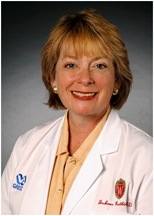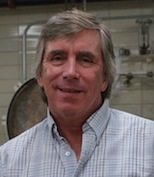Tasty Solution: Better beverages for people who have trouble swallowing
Rich Hartel and JoAnne Robbins taste a prototype of drinks that they believe will improve upon commercial products available for people with swallowing disorders.
Photo: Sevie Kenyon
After having a stroke in 2008, Jan Blume lost the ability to swallow for two full years. As she slowly regained that vital function, she faced a new challenge: drinking the thickened beverages that are recommended for people with swallowing problems, or dysphagia. She found the drinks almost intolerable.
“They taste bad and the texture is so weird,” recalls Blume, a retired nurse living in Appleton who can now eat and drink whatever she wants. “At some point, I would have just stopped using them — and either done okay or developed problems.”
Fortunately there may soon be a better beverage option for people with swallowing problems, thanks to collaboration between a dysphagia specialist at the UW–Madison School of Medicine and Public Health — and a candy expert in the College of Agricultural and Life Sciences.

JoAnne Robbins
It started by chance when JoAnne Robbins, head of the medical school’s Swallowing, Speech and Dining Enhancement Program, asked CALS food scientist Rich Hartel if she could borrow his viscometer, a device that measures viscosity, or the thickness of fluids.
“After learning that one of Rich’s areas of expertise was chocolate, I mentioned that there are all these awful-tasting drinks made for people with swallowing problems, and nothing in chocolate,” recalls Robbins, a professor of medicine with an affiliate position in the CALS nutritional sciences department. “So we decided to develop a thickened, chocolate drink together.”
The biomechanical events of swallowing are complex, involving 40 sets of muscles. Many things — including injury, illness and natural muscle atrophy due to aging — can cause dysphagia, which afflicts some 18 million adults in the United States.
The condition can be embarrassing. Some people with dysphagia simply stop going to restaurants or even eating with their families at home due to the struggle to swallow or the length of time it takes them to finish a meal. “This can have a devastating impact on social structures,” says Robbins.

Rich Hartel
But it’s more than just a quality-of-life issue, notes Robbins. Dysphagia can cause dehydration, hunger and malnutrition. Worse, if people with dysphagia aspirate liquids or food into their lungs, it can lead to pneumonia — and possibly death.
Many patients with dysphagia are advised to drink thickened beverages, which tend not to leak into the airway. But these products often leave much to be desired, and not just because of a bad flavor.
“The commercial products that are out there don’t match the diagnostic standards. So people think they’re buying a ‘nectar thick’ beverage, which is supposed to be a certain viscosity, but it’ll turn out that it’s not even close,” says Hartel.
That’s where Hartel and Robbins figured they could help: by developing what they call “biophysically based fluids” that match the diagnostic standards — making them safer for patients to drink — and that also taste good.
Robbins and Hartel are in the process of patenting their beverage technology and are excited for the day when people who must drink thickened beverages will have a safer, tastier option.
With the support of a U.S. Department of Agriculture grant, Hartel analyzed 15 thickeners and developed beverages using a handful of them. Robbins tested the drinks for safety in her patients, and a third team member, University of Minnesota researcher Zata Vickers, gathered key sensory data.
Ultimately the team gave up on chocolate after reading a number of studies showing that citrus flavors elicit a faster, better swallow. They are in the process of patenting their beverage technology through the Wisconsin Alumni Research Foundation, and are excited for the day when people who must drink thickened beverages — as Jan Blume did — will have a safer, tastier option.
“I’m in this to make my patients feel better,” says Robbins. Of her CALS collaborator, Robbins says, “Rich is a very good partner. He was open to expanding the focus of his research program. He liked the idea of helping people directly.”




